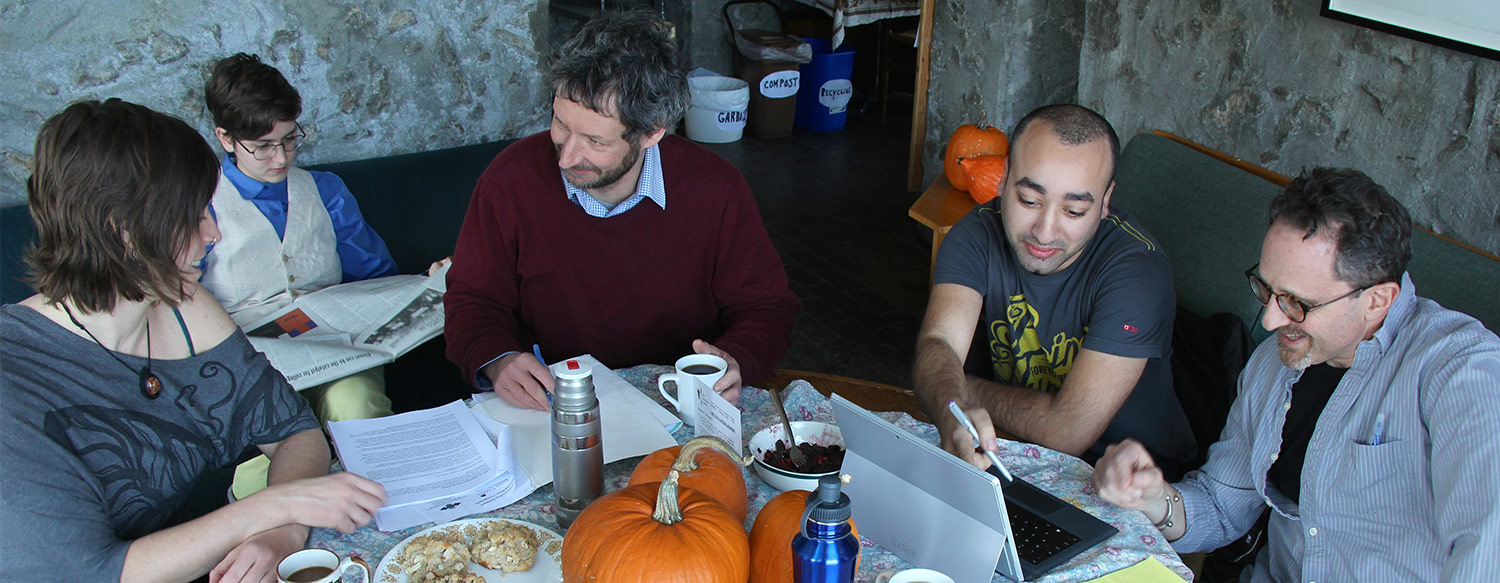by Chelsea Nash, CFICE Communications RA
 Taking a community first approach to community-campus engagement (CCE) is a cornerstone to the work CFICE does, but it’s impossible to be community first without the input and participation of community organizations.
Taking a community first approach to community-campus engagement (CCE) is a cornerstone to the work CFICE does, but it’s impossible to be community first without the input and participation of community organizations.
Community-based organizations (CBOs) such as non-profit, non-governmental, or charitable organizations, representing either the community-at-large, or a particular concern or segment of the community, are vital to community first research, learning, and fostering positive change.
CCE occurs when members of academic institutions and members of the community come together with a shared goal and the intention of accomplishing more together. Shared resources, such as funding, time, space, and labour, are an added benefit of CCE.
If you are a CBO considering a CCE partnership with an academic institution, here are a couple different types of CCE partnerships you might pursue.
Symbiotic partnerships: Community-service learning
Community service-learning (CSL), also known as service-learning or community-based learning, is a practical educational tool involving students in community service work as a part of rounding out their education. By making connections between what they’re learning in the classroom and their practical experience in the community, the goal is for students to develop a stronger sense of social responsibility, improve their critical thinking skills, and actively reflect on their connection with the community.
Carleton’s definition of community service-learning points out that this model differs from volunteerism in that volunteerism suggests a “charity model,” whereas “service is about mutual learning…[and] a reciprocal relationship between participants and the community members they work with.”
The premise is that while students get the added benefit of learning practical skills, networking with potential future employers, and further self-reflection, community organizations receive extra helping hands where they are needed. That said, community service-learning requires a lot of collaboration on the part of academic faculty, community partners, and students themselves.
Stephen Hill, an academic co-lead with CFICE’s Student Pathways for Community Impact Working Group, sees the value of community service-learning, even when it means a lot of extra work for himself: Every year he organizes service-learning placements for more than 300 students in his first year environmental science course.
In a blog post for CFICE Stephen wrote that the partnerships “emerged organically over the years with different partners gradually joining the mix.” The benefit for the students, he said, is having “the opportunity to learn about and work with the community in their first month of university…[which] is so important for building student engagement in the course and with the material.” As the partnerships progressed, he also stressed that “the community partners absolutely depend on the students in their projects.” In addition to providing needed human resources to different community partners, students can also contribute new and innovative ideas. This sort of symbiotic partnership is exactly what CCE is meant to be about.
Community service-learning vs Work-integrated learning
 To clarify some terminology (since it can get confusing in the CCE world), community service-learning also falls under what the Ontario government is calling work-integrated learning (WIL). Work-integrated learning, also known as experiential learning, involves the integration of academic curriculums with workplace experience.
To clarify some terminology (since it can get confusing in the CCE world), community service-learning also falls under what the Ontario government is calling work-integrated learning (WIL). Work-integrated learning, also known as experiential learning, involves the integration of academic curriculums with workplace experience.
Recently, the Ontario government has recommended that all postsecondary students engage in at least one work-integrated learning opportunity before graduation, as part of an effort to make new graduates more employable. Work-integrated learning encompasses all experiential learning, whether that be through systemic training such as apprenticeships, a structured work experience like a co-op placement or internship, or institutional partnership, like community service-learning.
Community-based research: With the community and for the community
In addition to working with students through programs that facilitate community service-learning, community-based organizations can also enter into a CCE partnership by participating in community consultations, or community-based research.
Community-based research, also known as participatory research, is conducted in the community with active participation from community partners. The end-goal is to benefit community partners and have a positive impact on the community. While community service-learning can be primarily about improving and enhancing student education, community-based research provides a space for community-based organizations to speak directly to academics on issues that are practically relevant to the community.
In the context of community-based research, community members actively participate in all parts of the research process, from defining the research question to interpreting and writing up the research results. While their level of involvement can be negotiated to meet the community’s needs, this type of deep engagement ensures the most beneficial outcome for the community can be achieved. Additionally, embedded research assistants, working closely with the community partner, can often act as liaisons between the community and academic partners in community-based research. Ultimately, this approach is collaborative rather than unilateral.
Some community partners might be wary of being the subject of academic research due to previous experiences where power dynamics damaged relations between the academic and the community members. However, if both academic and community partners prioritize community first engagement, then power differentials in the research process can be discussed and negotiated in a respectful manner.
One example of community-based research within CFICE’s Poverty Hub occurred with the CCE partnership between the Hamilton Roundtable for Poverty Reduction and McMaster University. This research project assessed barriers to implementing a living wage experienced by small- to medium-sized business. By conducting the research in a community first way, this partnership successfully developed strategies for encouraging businesses to pay a living wage, and even had some research subjects already committing to being living wage employers by the end of the study.
Students engaged in community service-learning might contribute ideas to ongoing projects with CBOs, but within community-based research, the intention from start to finish is to develop practical and action-oriented results for positive social change in the community.
A positive result of CCE: Mobilized knowledge and enhanced networks
An important aspect of any CCE partnership’s success is sharing the knowledge that was learned through the process. Knowledge Mobilization is the process of creating knowledge that is useful and used by the public, communities, and policy makers. Within the context of CCE projects, knowledge mobilization is the process of sharing the results in ways that benefit the community—even if it’s a matter of learning what not to do in the future. This can include making sure the research findings are curated into final products that can be shared with new and existing partners.
 Knowledge mobilization is key to the ongoing success of partnerships because it provides a foundation of knowledge that future community partnerships can then build and improve upon. As well, it helps ensure that community-generated knowledge is shared with other stakeholders, including governments, local businesses, and other institutions. Having access to this knowledge helps stakeholders and networks respond to community needs more effectively.
Knowledge mobilization is key to the ongoing success of partnerships because it provides a foundation of knowledge that future community partnerships can then build and improve upon. As well, it helps ensure that community-generated knowledge is shared with other stakeholders, including governments, local businesses, and other institutions. Having access to this knowledge helps stakeholders and networks respond to community needs more effectively.
Ultimately, CFICE has found that engaging in community first CCE can bring out the strengths of all participants, particularly when considering how the skills and capabilities of academic partners and community partners can be different, but complimentary. These partnerships also build lasting networks that extend beyond the partnership itself, which ultimately has the added benefit of connecting knowledge with practice and vice versa.

